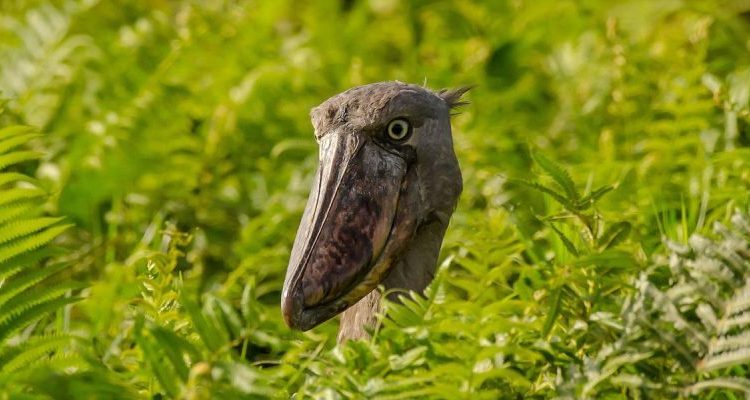When is the Best Time to Visit Uganda?
Unlocking the Seasons of the Pearl of Africa
Step Into a Land Where Every Season Tells a Story
Nestled in the heart of East Africa, Uganda is a country defined by its untamed wilderness, warm hospitality, and remarkable biodiversity. Often hailed as the “Pearl of Africa,” Uganda is more than just a travel destination—it is a place where nature thrives year-round and where each season unveils a unique charm. But for those planning a journey into this land of misty mountains, glacial lakes, savannahs teeming with wildlife, and gorilla-filled forests, one question naturally arises: When is the best time to visit Uganda?
Uganda’s proximity to the equator gifts it a pleasant tropical climate throughout the year, with temperatures rarely swinging into extremes. Yet despite its relatively stable weather, the country experiences distinct wet and dry seasons, each affecting travel, wildlife viewing, and landscape character in different ways. Understanding these seasonal nuances is essential for anyone seeking to experience Uganda in its full glory—whether it’s for gorilla trekking, bird watching, game drives, or cultural exploration.
The Climate of Uganda: A Tropical Balance
Uganda’s climate is shaped by its equatorial position, high elevation, and varied geography. It is a land blessed with consistently warm days, cool nights, and lush green landscapes that rarely fade into dryness, even in its driest months. Average daytime temperatures hover between 25°C and 29°C, with cooler nights especially in the highland areas such as Kabale, Fort Portal, and Bwindi.
The country experiences two primary wet seasons—from March to May and again from October to November. These months bring heavier rainfall, particularly in the southwestern and central regions. In contrast, the dry seasons, from December to February and June to September, are marked by clearer skies and more predictable weather, making them ideal for many outdoor activities.
The Dry Seasons: Prime Time for Exploration
The months of June to September and December to February are widely considered the best times to visit Uganda. These periods provide ideal conditions for safari adventures, gorilla and chimpanzee trekking, and landscape photography. Trails in forested parks such as Bwindi Impenetrable National Park and Mgahinga Gorilla National Park are more navigable, as the terrain remains firm and less slippery. Gorilla trekking during these months is less physically demanding and offers clearer visibility through the foliage.
During the dry season, wildlife viewing in savannah parks like Murchison Falls, Queen Elizabeth, and Kidepo Valley becomes even more rewarding. Animals tend to congregate near permanent water sources, increasing the chances of witnessing dramatic wildlife interactions. Grasslands are shorter, offering better sightlines for observing predators such as lions, leopards, and hyenas in action.
These months also coincide with the European winter, meaning international tourist arrivals increase slightly, particularly during the Christmas and summer holidays. However, Uganda’s parks are never overly crowded, and the experience remains intimate, personal, and close to nature.
The Wet Seasons: Lush, Wild, and Full of Life
While often overlooked, the rainy seasons from March to May and October to November bring their own magic. The landscapes transform into vibrant green mosaics, rivers swell with life, and forests echo with the calls of mating birds and primates. For birdwatchers, these months are a hidden gem, as migratory birds from Europe and northern Africa arrive, and breeding plumage makes for incredibly colorful sightings.
The Green Season, as it is sometimes referred to, also brings with it fewer tourists and more availability in lodges, often with reduced rates. This makes it an attractive period for budget-conscious travelers and photographers seeking dramatic skies and lush backdrops.
However, travel during this time does require a little more preparation. Roads in remote areas may become muddy, and trekking conditions can be more physically challenging. Yet for the seasoned explorer or the determined wildlife enthusiast, these months offer a deeper, quieter, and more immersive experience of Uganda.
Best Time for Gorilla Trekking: Timing the Ultimate Encounter
For many, gorilla trekking is the pinnacle of any Ugandan safari. These majestic creatures live in the mountainous forests of southwestern Uganda, where weather patterns tend to follow the national norm but with increased local rainfall due to the dense forest cover and altitude.
The optimal months for gorilla trekking are during the dry seasons—June to September and December to February. The trails are more manageable, and chances of uninterrupted viewing are higher. However, gorilla trekking is conducted year-round, and permits are not cheaper during the wet seasons. The rainforest can never be entirely dry, but with the right gear and attitude, tracking these gentle giants in the mist during the rainy season can be an equally soul-stirring adventure.
Best Time for Bird Watching: Avian Abundance Year-Round
Uganda is a world-renowned birding destination, home to over 1,060 species, including many endemic and rare birds. Birding in Uganda is excellent all year, but it peaks during the wet seasons, especially November and April, when migrant species arrive and breeding is in full swing.
During this period, birds display vibrant breeding plumage, and their behaviors become more dramatic and vocal. Wetlands, forest edges, and riverbanks become particularly active, making places like Mabamba Swamp, Bwindi, and Semuliki Forest ideal for birding excursions. For those targeting specific birds like the elusive Shoebill, dry seasons offer better access, but sightings are possible year-round in the right habitats.
Cultural Festivals and Local Experiences by Season
Uganda’s cultural richness adds yet another layer to seasonal travel. Traditional festivals, religious holidays, and cultural events take place throughout the year, providing opportunities for immersive local experiences. Events such as the Nyege Nyege Festival on the banks of the Nile in Jinja, usually held in September, attract international music lovers and cultural enthusiasts, blending modern Afro-beats with traditional Ugandan rhythm.
Visiting during national holidays or harvest seasons allows travelers to connect more intimately with Uganda’s diverse ethnic communities, whether through dance, food, or storytelling. The warmth of the Ugandan people is ever-present, regardless of the calendar.
High Season vs. Low Season: Navigating Tourist Traffic
Uganda, compared to many East African countries, remains a relatively uncrowded safari destination. The high seasons, aligning with the dry months, do see increased activity, especially in popular gorilla parks. It is advisable to book gorilla permits and accommodation several months in advance if traveling during this time.
The low seasons, falling within the wetter months, present opportunities for quiet travel, discounted rates, and more personalized safari experiences. For photographers, the diffused light and green landscapes create ideal conditions for capturing Uganda’s natural beauty.
A Land for All Seasons
Uganda’s beauty does not lie in perfection—it lies in wild authenticity. Whether the sky is clear or pregnant with rain, whether the grasslands are golden or emerald, Uganda always delivers unforgettable moments. One season may offer ease and comfort; another, raw adventure and intimacy. But every journey to Uganda, regardless of timing, promises to leave the traveler changed—awakened by nature and touched by the spirit of Africa.
Plan the Perfect Safari with WildHorn Africa
For those dreaming of stepping into this timeless wilderness, timing is important—but so is who you travel with. WildHorn Africa offers expert guidance, customized itineraries, and sustainable safari experiences tailored to your preferences and travel dates. Whether you seek the thrill of gorilla trekking, the calm of a boat cruise on the Nile, or the delight of discovering rare birds, WildHorn Africa ensures your journey is seamless, respectful, and deeply enriching.
Book your African safari with WildHorn Africa and discover that the best time to visit Uganda is when your heart is ready for the wild. Let the land, its people, and its seasons welcome you to a story that is unforgettable in any weather.




 WildHorn Africa – Authentic and unforgettable tours across Africa, guided by local experts who know the land, wildlife, and culture best.
WildHorn Africa – Authentic and unforgettable tours across Africa, guided by local experts who know the land, wildlife, and culture best.


